Living and Learning in Málaga – Year 2, Migration
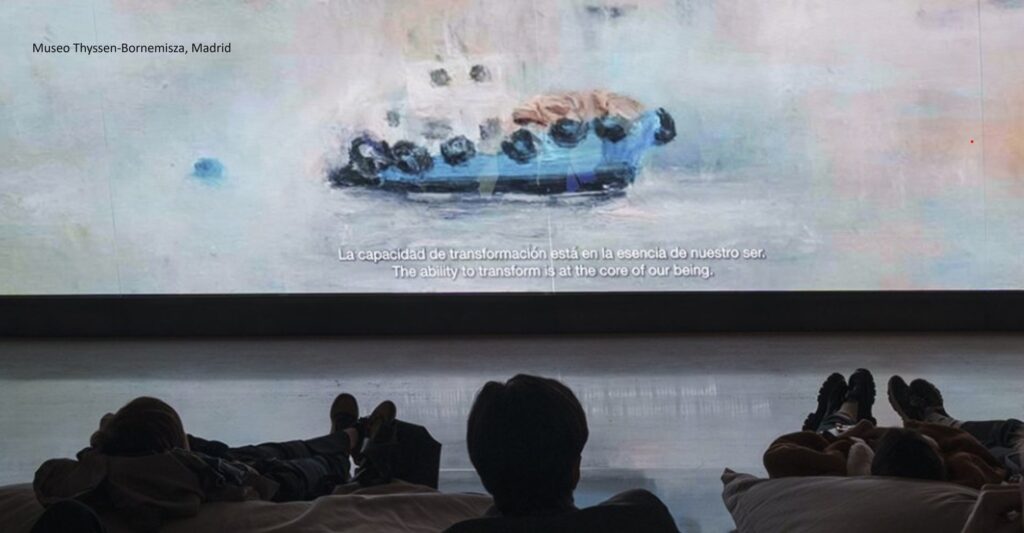
Migration is the theme for this month’s post, which includes an Englishman who moved to Spain in 1920 and became a hispanist; Latin Americans who migrate to Spain because economic collapse in their own countries compromises their future; and an exhibit at a Madrid museum by a Filipina Canadian filmmaker who looks at migration on both the human and animal level.
Wrap-up on Writing Retreat
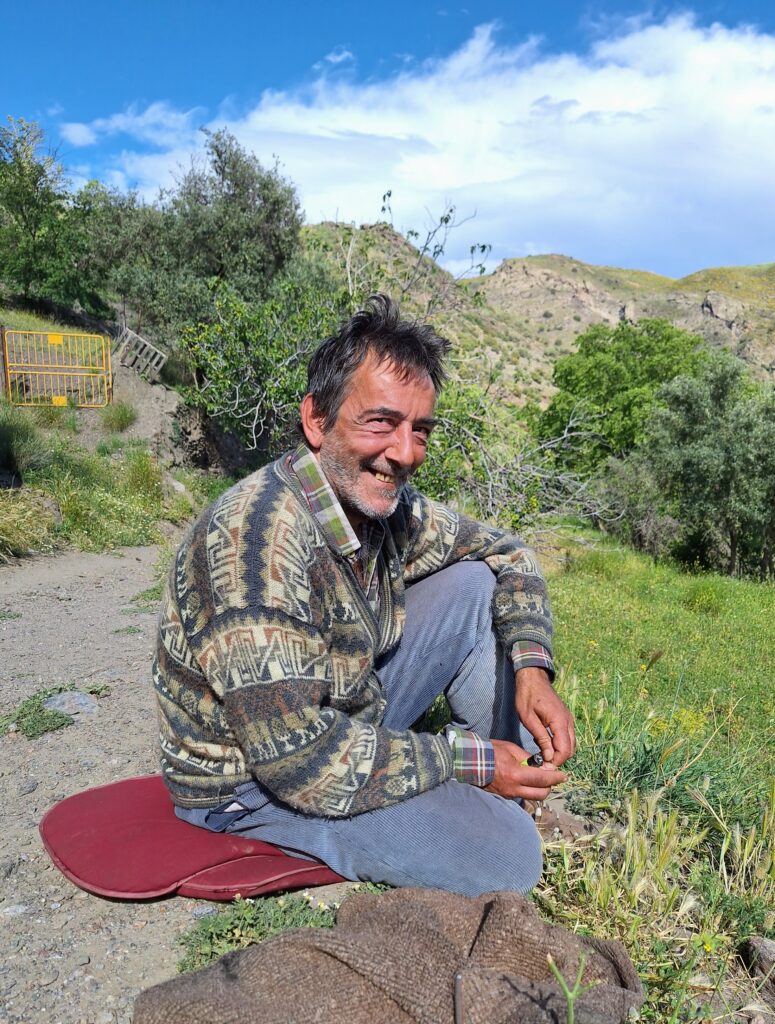 In last month’s post, I mentioned the ten-day writing retreat I was attending in La Alpujarra called Casa Ana which ran through the first week of May. Spending time writing, attending readings to enjoy and learn from the work of other residents, and receiving much-appreciated advice from the brilliant resident mentor Ayisha Malik were the focus of the retreat. But just as necessary to the experience were the walks to nearby villages connected by hiking trails hemmed by spring wildflowers. I was also keen to talk to a local beyond polite greetings in passing.
In last month’s post, I mentioned the ten-day writing retreat I was attending in La Alpujarra called Casa Ana which ran through the first week of May. Spending time writing, attending readings to enjoy and learn from the work of other residents, and receiving much-appreciated advice from the brilliant resident mentor Ayisha Malik were the focus of the retreat. But just as necessary to the experience were the walks to nearby villages connected by hiking trails hemmed by spring wildflowers. I was also keen to talk to a local beyond polite greetings in passing.
On my last full day, as I was returning from a walk on one of the trails, there on the side of the path sat a man I’d passed in the village a couple of times and greeted with an hola, which he had returned with his own low-throated hola. That afternoon, he was sitting cross-legged on a cushion, a book beside him, while rolling a cigarette. Since he was stationary and not about to go anywhere, I sat down not far from him and began a conversation. I asked him what he was reading. It was a book on philosophy. It turns out he spent a good part of his time sitting outside in the spectacular landscape, smoking, reading, and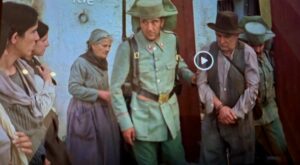 meditating. If I was interrupting him, he—Luis—seemed unperturbed about it. In fact, there was amusement in his face as he indulged this nosy estadounidense with choppy Spanish. Luis was a delight to talk to and I’m grateful he allowed me to include his photo here. We talked about various things, among them Gerald Brenan, the English writer who belonged to the Bloomsbury group that included Virginia Woolf and E.M. Forster. Brenan arrived in La Alpujarra in 1920 and spent much of the rest of his life in Spain, producing several books about its history and people. It turns out Gerald Brenan and his wife, the writer Gamel Woolsey, are buried in the English Cemetery here in Málaga where he and Woolsey lived after leaving La Alpujarra. I learned from Luis that Brenan’s book South of Granada was the basis of a Spanish movie about Brenan’s early years in the region. The movie called Al Sur de Granada was filmed in nearby Pitres and employed many locals as extras, including Luis who played a Guardia Civil. A few days later when I was back in Málaga, I watched the movie and found the scene in which two Guardia Civil members escort their prisoner away. It was fun to be watching the movie and then suddenly see the two Guardia Civil officers appear and realize that one of them was the wry-smiling, serene, friendly but apparently solitude-loving person on a trail just outside a tiny village in the Sierra Nevada.
meditating. If I was interrupting him, he—Luis—seemed unperturbed about it. In fact, there was amusement in his face as he indulged this nosy estadounidense with choppy Spanish. Luis was a delight to talk to and I’m grateful he allowed me to include his photo here. We talked about various things, among them Gerald Brenan, the English writer who belonged to the Bloomsbury group that included Virginia Woolf and E.M. Forster. Brenan arrived in La Alpujarra in 1920 and spent much of the rest of his life in Spain, producing several books about its history and people. It turns out Gerald Brenan and his wife, the writer Gamel Woolsey, are buried in the English Cemetery here in Málaga where he and Woolsey lived after leaving La Alpujarra. I learned from Luis that Brenan’s book South of Granada was the basis of a Spanish movie about Brenan’s early years in the region. The movie called Al Sur de Granada was filmed in nearby Pitres and employed many locals as extras, including Luis who played a Guardia Civil. A few days later when I was back in Málaga, I watched the movie and found the scene in which two Guardia Civil members escort their prisoner away. It was fun to be watching the movie and then suddenly see the two Guardia Civil officers appear and realize that one of them was the wry-smiling, serene, friendly but apparently solitude-loving person on a trail just outside a tiny village in the Sierra Nevada.
Spanish Acquisition Report
When I returned from my ten days in La Alpujarra, I felt like my Spanish was still on hiatus. I was grasping for words in my classes with Sebastián. Even my English vocabulary had deserted me. It was as if the spigot from brain to tongue had completely dried up. It burbled open when I visited my Argentinian friend Claudia, one of the owners of Bottega, the wine and coffee bar near me. It’s relaxing to talk to her, and not because we’re surrounded by bottles of wine. She’s so warm and welcoming and easy to have a conversation with. On a recent visit, I also chatted with her Venezuelan employee before he started his shift. Jesus is an impressive young man in his early twenties—industrious, intelligent, thoughtful—who will surely succeed in life.
Both are here because the economies of their home countries are in shambles. Claudia came with her husband and three sons several years ago. Jesus has been here about a year. There’s much to admire about them both and others like them who come to Spain to start their lives anew, which involves leaving behind family, friends, and a beloved city or village. They seek opportunity, a future where possibilities outnumber problems, which is what drives migration. And in all this, they are kind enough to help me learn Spanish.
Farewell to Another Friend
Living in Málaga means a lot of people you meet are here just temporarily so I find myself having to say goodbye often. I met Karlo last September at an intercambio. Soon after that meeting, we both stopped attending the intercambio, finding that it was not the best way to have conversations in Spanish. We met several times together on our own and since his Spanish is fluent, I was the one that benefitted the most from these meetups. A student of languages from Croatia, Karlo’s Erasmus year as a teaching assistant at the University of Málaga comes to an end this month and he will return to Zagreb. I’m envious of his facility with languages. He can speak and read all the Romance languages and is fascinated by grammatical structures. He is enamored of the subjunctive mood, the bane of the Spanish language learner, and nothing delights him more than the opportunity to explain its usage. And I have delighted in listening to these explanations though the subjunctive can still baffle me. I am grateful to have spent time with this young man and in his honor will learn to love the subjunctive.
A Literary and Art-filled Visit to Madrid
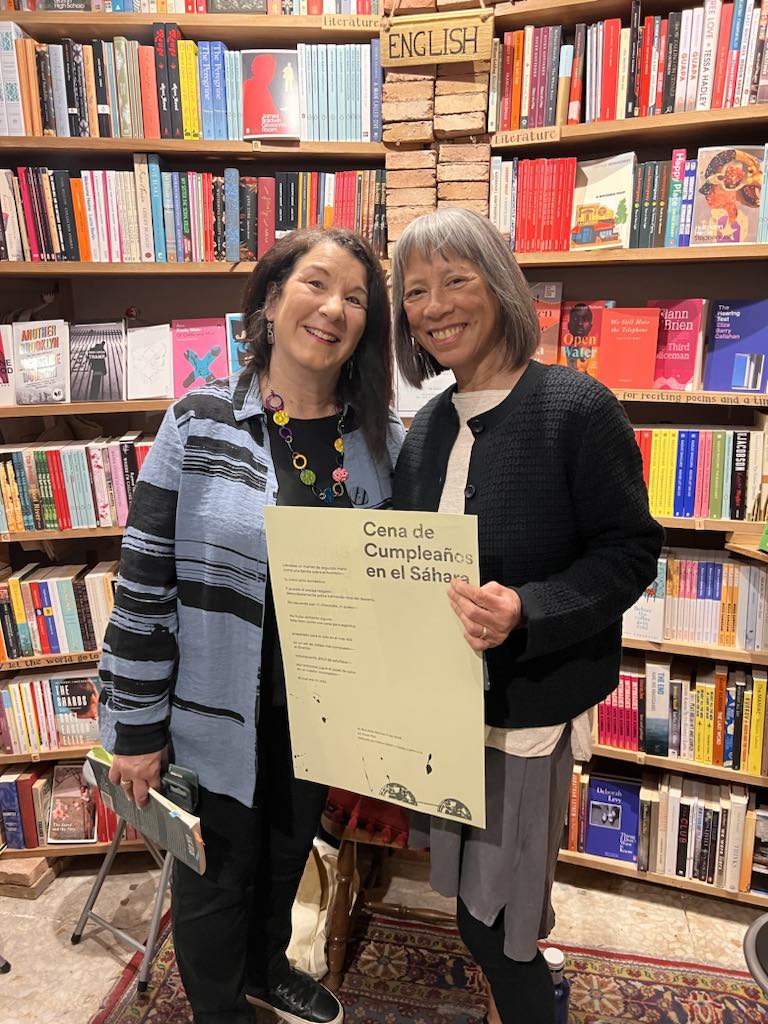 I went to Madrid to see and hear Seattle friend Susan Rich read from her new poetry collection Blue Atlas at the very cool little Librería Desperate Literature. It focuses on literature written in English but also carries some Spanish and French titles. It’s a tiny space but apparently with an active and engaged clientele, judging by the attendance at Susan’s event. Susan gave a stellar reading followed by a vibrant conversation with the audience. At the beginning of the reading, the person designated to read the Spanish translation of one of Susan’s poems was not immediately available so I boldly opened my big mouth and volunteered. Without having practiced or even read the poem beforehand, I plunged into it and managed to not make a fool of myself, or so I thought. Later, at the bar next door where some of the reading attendees gathered after the event, I learned that there had been actual native Spanish speakers in the audience. They kindly and enthusiastically declared that my reading of the poem had been good. But really, I think it would’ve been better had one of them read the poem. Sheesh, the nerve of me.
I went to Madrid to see and hear Seattle friend Susan Rich read from her new poetry collection Blue Atlas at the very cool little Librería Desperate Literature. It focuses on literature written in English but also carries some Spanish and French titles. It’s a tiny space but apparently with an active and engaged clientele, judging by the attendance at Susan’s event. Susan gave a stellar reading followed by a vibrant conversation with the audience. At the beginning of the reading, the person designated to read the Spanish translation of one of Susan’s poems was not immediately available so I boldly opened my big mouth and volunteered. Without having practiced or even read the poem beforehand, I plunged into it and managed to not make a fool of myself, or so I thought. Later, at the bar next door where some of the reading attendees gathered after the event, I learned that there had been actual native Spanish speakers in the audience. They kindly and enthusiastically declared that my reading of the poem had been good. But really, I think it would’ve been better had one of them read the poem. Sheesh, the nerve of me.
This mighty, little store is being kicked out of its current space so the building can be renovated for luxury tourist apartments. The store owners have secured a new space elsewhere in Madrid’s Centro but need funds to renovate the purchased frutería into a bookstore. Donate here if you’d like to help.
Librería Desperate Literature holds an annual short story competition. One of the prizes is a week-long residency at the Civitella Ranieri Foundation, which would be a dream to attend. Submissions are closed for this year, but you can sign up for their newsletter to receive updates of bookstore goings-on, including contest information when it’s available.
◊◊◊
The next day of my Madrid visit I spent at the Museo Thyssen-Bornemisza, one of my favorite museums in this city. There were two temporary exhibitions I was intent on seeing. One was by the realist painter Isabel Quintanilla and the other by Flilipina Canadian artist and filmmaker Stephanie Comilang. Both shows were deeply evocative and utterly absorbing.
Isabel Quintanilla, who was part of the new Spanish realist movement, is known for her still lifes in which her use of light makes the paintings shimmer with life and activity where no human is depicted. The show is called “El realismo intimo de Isabel Quintanilla,” an apt title because the works are close-ups, not necessarily in perspective, but in the details captured and the sense of privacy created by light and shadow of interior spaces, gardens, and even landscapes or cityscapes. The paintings draw you in and hold you, and you’re both observer and participant in the art.
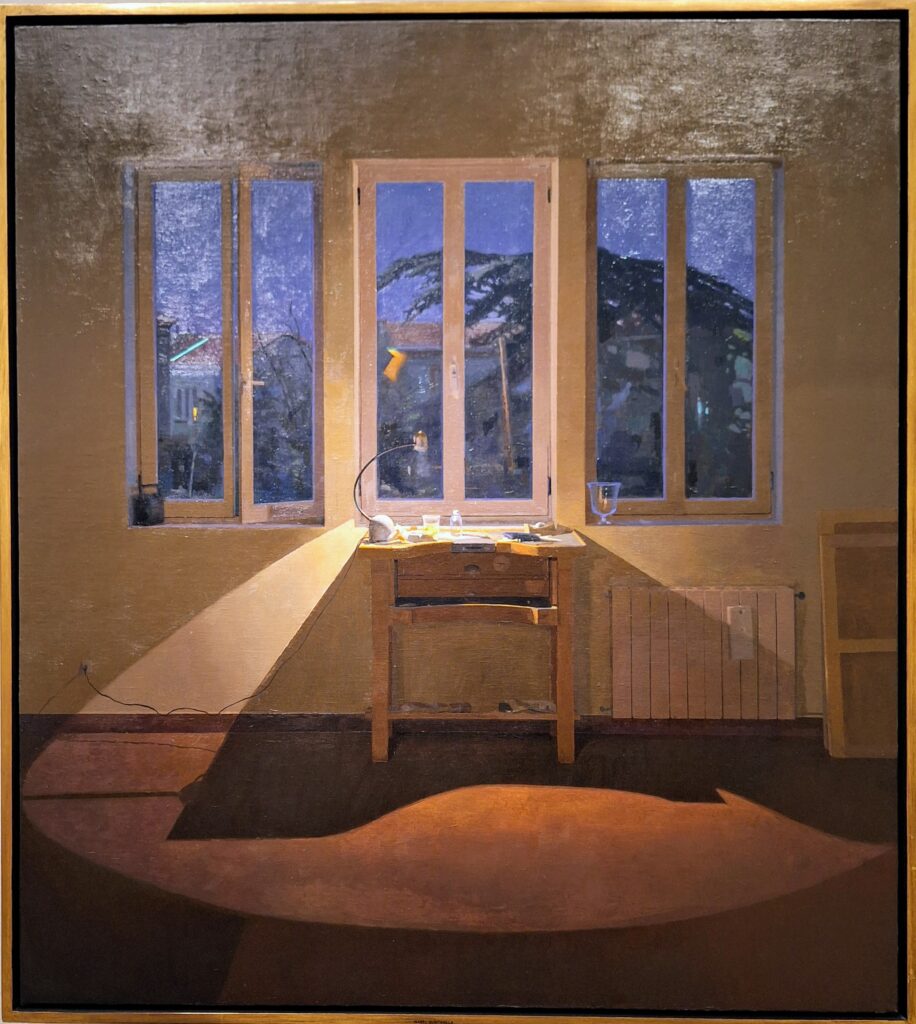
Part of any activity is learning new vocabulary. I especially love this example: The word for pansy in Spanish is pensamiento, which also means a thought. And suddenly the pansy is my favorite flower. Let me hold a posy of pensamientos in my hand, hold it to my nose, arrange it in my hair.
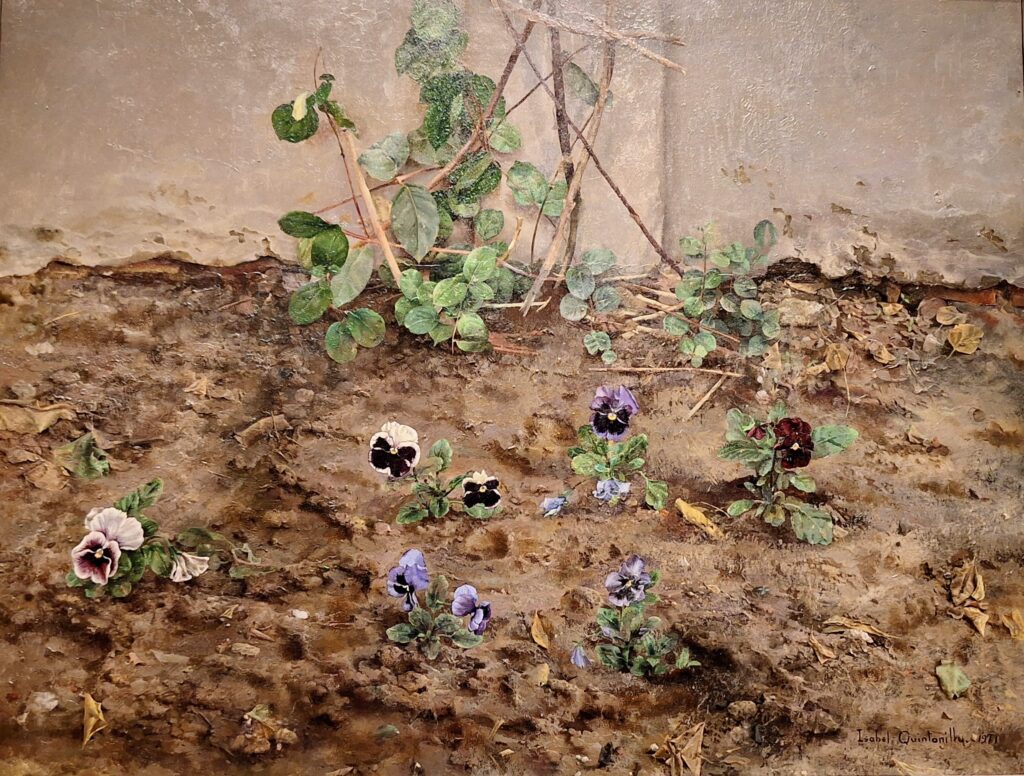
◊◊◊
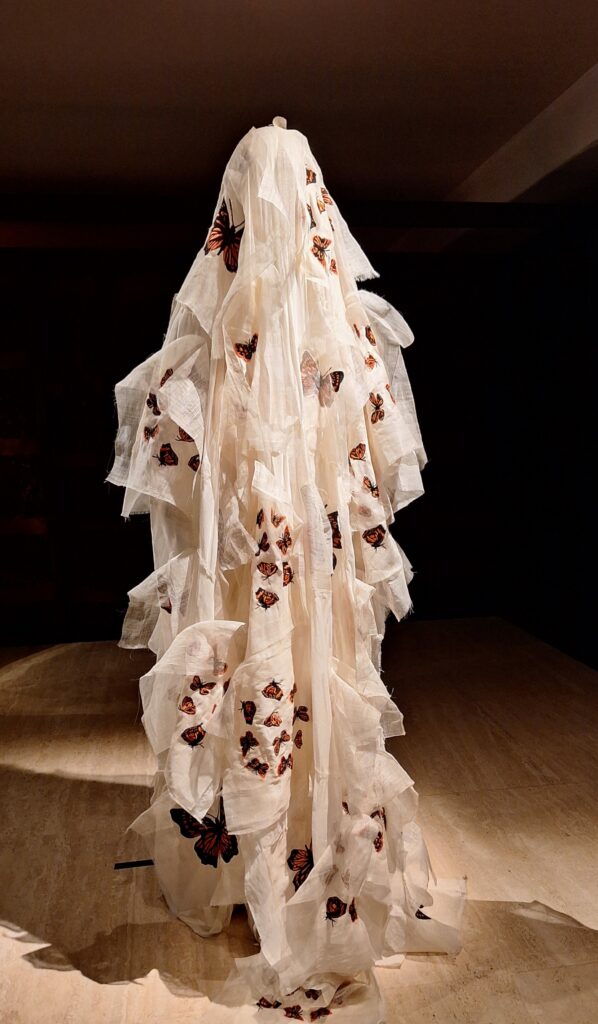 Stephanie Comilang’s short film titled En busca de la vida juxtaposes the migration of the Monarch butterfly from Canada to Mexico with the migration that occurred as part of the 250 years of the Spanish galleon trade that carried goods (as well as people) from Manila to Acapulco. Filipino handcrafts were imitated by Mexican artisans, so that the barong tagalog made of pineapple fiber became the guayabera of Latin America and the Caribbean. Filipino lacquerware and flower embroidery were other crafts adopted in Mexico. The ships themselves were navigated by Filipinos, long known as expert seafarers. Today, sixty percent of the world’s cargo ships are operated by Filipinos due to their skills as seafarers.
Stephanie Comilang’s short film titled En busca de la vida juxtaposes the migration of the Monarch butterfly from Canada to Mexico with the migration that occurred as part of the 250 years of the Spanish galleon trade that carried goods (as well as people) from Manila to Acapulco. Filipino handcrafts were imitated by Mexican artisans, so that the barong tagalog made of pineapple fiber became the guayabera of Latin America and the Caribbean. Filipino lacquerware and flower embroidery were other crafts adopted in Mexico. The ships themselves were navigated by Filipinos, long known as expert seafarers. Today, sixty percent of the world’s cargo ships are operated by Filipinos due to their skills as seafarers.
The documentary centers on a young Filipino man whose mother was an OFW (overseas foreign worker) for most of his childhood, working in other countries to send money home. He saw his mother for only short periods of time in the years between her various postings. She would send home clothing, snacks, supplies, and other items in the emblematic balikbayan boxes Filipinos living overseas mail to family. The year his mother included a set of colored pencils was the year that he became an artist.
Upon finding out that his mother could not afford to help him through college, he found a position aboard a ship that would allow him to earn and save money for his education. He talks about how the sea is a mother to him, and also how he has become his mother in that he is away from home for long stretches of time. He describes and draws an image that comes to him in his dreams while at sea: a faceless woman in a white dress to which butterflies cling, a haunting image that Comilang recreated for the exhibition.
This is a profound exhibit about migration, change, and the fragility of life. Comilang, the artist, and the curator of the exhibit Chus Martinez provide background about the film in this video. 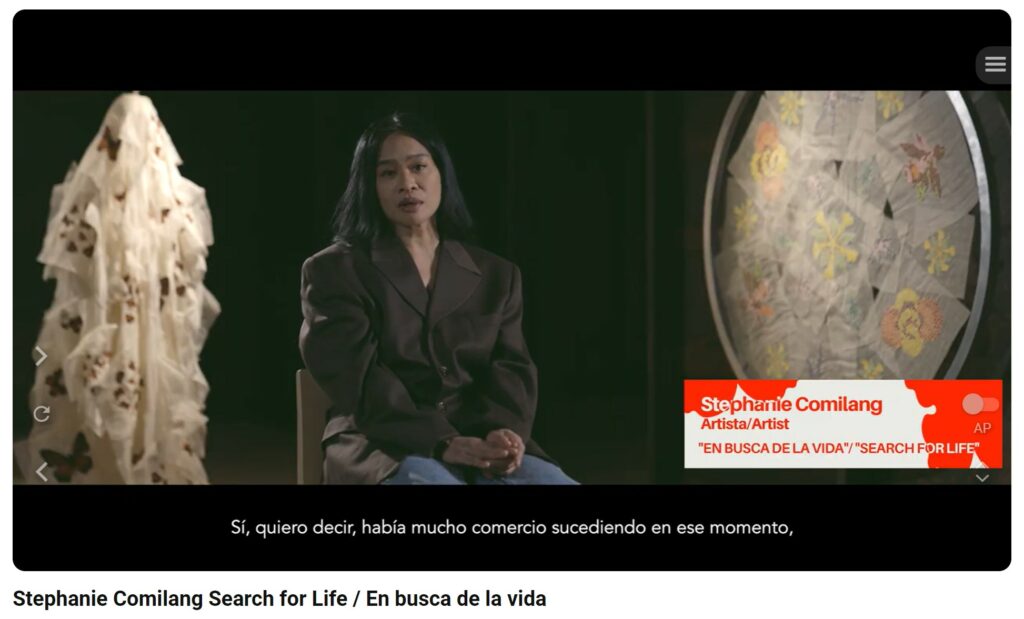
To close out this post on migration, let me add that James and I went last week to the police station to be fingerprinted, the last step for approval of our renewed residency application. We’ll receive our new Tarjeta de Identidad de Extranjera (T.I.E.) cards in July. We’ll repeat the process in two more years, and two years after that, we can apply to be permanent residents of Spain.
Congratulations on your renewed residency. I can’t believe two years have past. I love reading about your adventures.
Lovely pensamientos about migration and what propels or calls us to move elsewhere, Donna! Inspiring and thought provoking.
Wow, so many rich opportunities for learning, reading, talking, meeting people. Your head must spin sometimes!